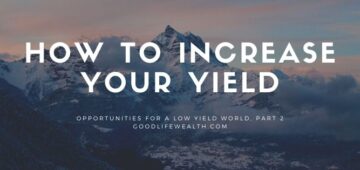At the end of March, the CARES Act waived 2020 RMDs (Required Minimum Distributions) from retirement accounts. This will help people who do not need to take distributions. They can leave their IRAs alone and not be forced to take a taxable withdrawal while the market is down.
Unfortunately, this change created a couple of problems. People could have started their 2020 RMDs as early as January 1, but the waiver didn’t occur until late March. Some people set up monthly distributions from their IRA, but can only put back one, due to the rules regarding 60-Day Rollovers. Later, the IRS said that if you took a withdrawal between February 1 and May 15, you could put it back before July 31. But that left out people who took RMDs in January.
This week, the IRS corrected both of those situations with IRS Notice 2020-51. The ruling will provide relief for anyone who wants to put back their RMDs taken after January 1. You have until August 31 to roll them back into your IRA. Also, if you took multiple withdrawals, you can put them all back. That’s because this one-time rollover is not going to be considered a 60-Day Rollover. (You con only do ONE 60-day rollover in a 365 day period.)
Also, Inherited IRAs (Stretch or Beneficiary IRAs) were never allowed to do 60-day rollovers. Under this week’s ruling, if you had taken your RMD from an Inherited IRA, you can put now return the money to the account through August 31. Unprecedented!
As a reminder, the age for RMDs increased to 72, from 70 1/2, last year. It’s good that the IRS has provided relief from the quagmire Congress created with CARES Act changes in March. So, if you don’t want to take an RMD, you don’t have to. And now you can reverse your RMDs if you had already started.
Planning Opportunities
Currently, tax rates are low, but the Federal rates are supposed to sunset after 2025. So, if you have a choice between paying some taxes now at 12% or 22% that might be better than paying 15%, 25%, or more down the road. Also, if you anticipate needing to take more than your RMD next year, you might be better off spreading that amount over 2020 and 2021, if it will keep you in a lower marginal tax bracket.
Another opportunity afforded by the 2020 RMD waiver is to do a Roth Conversion. If you had planned to pay the taxes on a $50,000 RMD, you could do a $50,000 Roth Conversion instead. Once in the Roth, your $50,000 is growing tax-free with no future RMDs. You paid some taxes at today’s lower rates, and reduced your future RMDs by doing a conversion in 2020.
A Roth Conversion does not count towards your RMD amount. So for people over 72, most never want to do a conversion because they are already paying a lot in taxes on their RMD. It’s best to do conversions after you retire – and are in a low bracket – but before you start RMDs. For people who missed that window, 2020 is the year to do a Roth Conversion.
Retirement Income Expertise
Creating tax-efficient retirement income is our mission and passion. If you want professional advice on establishing your retirement income plan, we can help. Here’s how:
- We stay informed. Rules regarding your IRAs and 401(k) accounts have actually seen significant changes in the past couple of years.
- Tools, not guesses. We analyze the likelihood of success of your retirement income plan through MoneyGuidePro. You will create a baseline scenario, which we will monitor and adjust based on market changes.
- Asset location. Improving tax-efficiency through placing investments which generate ordinary income into tax-deferred accounts, and keeping long-term capital gains and qualified dividends in taxable accounts. Research and select more tax-efficient investment vehicles.
- Sequence of Withdrawals. Determine the optimal order of withdrawals by account type and asset. Evaluate when you begin Pension payments and Social Security.
I suspect that there are not a lot of my readers who need to put back RMDs from January and are impacted by Notice 2020-51. But, I do have clients in this exact situation, and this type of detailed work is how I can add value to your financial life. Whether you are already retired, soon to be retired, or it’s just a dream at this point, we can create a plan to take you through the steps you need to feel comfortable about retirement.







